This holiday season, we have an early gift for all the web3 developers out there. Our mobile SDKs are now available in Developer Preview 🧑💻

This holiday season, we have an early gift for all the web3 developers out there. Our mobile SDKs are now available in Developer Preview 🧑💻


When building with XMTP, a conversation comprises a set of messages exchanged between two participants. These participants are identified solely through their wallet addresses.
Web3 is founded on values such as decentralization, portability and ownership. These principles allow users to maintain multiple pseudonymous identities. The idea is that users should be able to possess multiple identities, switch between them as they please, display varying information, and interact with different individuals.
In the context of the Lens Protocol, each identity is represented as a Profile NFT. Given that the core values of Lens are permissionless and portable, you can hold multiple profiles or identities and use them across different applications and platforms.
Because an address can hold multiple profiles and there are address-based interactions such as follow or collect, the default profile variable allows the owner to select one profile as their default. This functionality gives interfaces the ability to shape how such interactions are displayed based on the default profile, rather than just an address. Read more
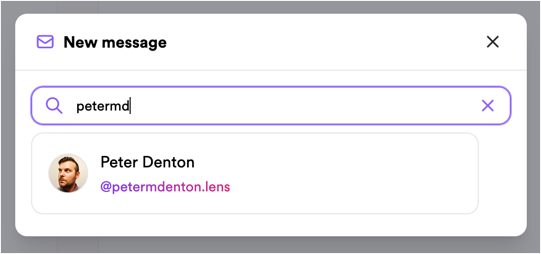
When building with XMTP, you must provide a way to start a conversation between the user and the wallet address they want to message.
For a Lens app, you want to enable the user to start a conversation with a Lens profile only.
Here is the New message modal in Lenster, providing a field where users can search for the Lens profile they want to message:
lens.dev/dmconst PREFIX = "lens.dev/dm";
const buildConversationId = (profileIdA: string, profileIdB: string) => {
const profileIdAParsed = parseInt(profileIdA, 16);
const profileIdBParsed = parseInt(profileIdB, 16);
return profileIdAParsed < profileIdBParsed
? `${PREFIX}/${profileIdA}-${profileIdB}`
: `${PREFIX}/${profileIdB}-${profileIdA}`;
};
conversationIdBuilding multi-profile experiences is optional. Allowing users to have different conversations with multiple profiles can make the experience inconsistent outside the Lens ecosystem.
You can assign a conversation ID to conversations and then use the ID to filter and organize conversations as needed. You set the conversationId when your app creates a conversation.
const conversation = await client.conversations.newConversation(
otherProfile.ownedBy,
{
conversationId: buildConversationId(myProfile.id, otherProfile.id),
metadata: {},
},
);
await conversation.send("gm");
let conversation2 = try await client.conversations.newConversation(
with: "0x3F11b27F323b62B159D2642964fa27C46C841897",
context: .init(conversationID: buildConversationId(myProfile.id, otherProfile.id),
metadata: ["title": "Bar conversation"]
)
)
let conversation1 = try await client.conversations.newConversation(
with: "0x3F11b27F323b62B159D2642964fa27C46C841897",
context: .init(conversationID: buildConversationId(myProfile.id, otherProfile.id))
)
val conversation2 = client.conversations.newConversation(
"0x3F11b27F323b62B159D2642964fa27C46C841897",
context = InvitationV1ContextBuilder.buildFromConversation(
conversationID: buildConversationId(myProfile.id, otherProfile.id), metadata = mapOf("title", "Bar conversation"))
)
Now that you've built the Lens DM conversationId for your Lens app, your app can use it to filter and organize Lens conversations. For example, you can use the Lens DM conversation ID as a filter to provide a UI in your app that displays Lens conversations only. This section describes how to filter for Lens conversations and then display their message previews.
Here is the Messages panel in Lenster using the Lens DM conversationId to filter and display a user's Lens conversations only, along with message previews:
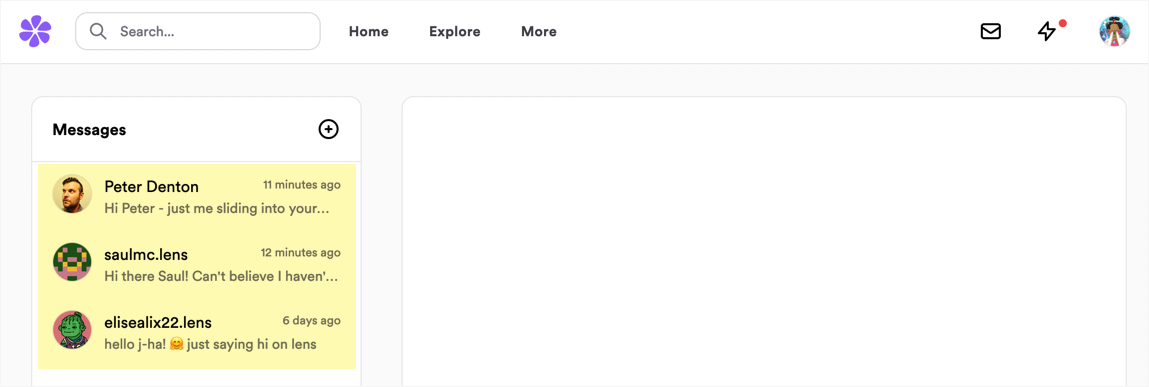
To filter for Lens conversations and then display messages in a conversation:
// Filter for Lens conversations with your profile
const myProfileConversations = lensConversations.filter((conversation) =>
conversation.context?.conversationId.includes(myProfile.id),
);
// Get all the conversations
let conversations = try await client.conversations.list()
// Filter for the ones from your app
let myAppConversations = conversations.filter {
guard let conversationID = $0.context?.conversationID else {
return false
}
return conversationID.hasPrefix("lens.dev/dm/")
}
// Get all the conversations
var conversations = await client.listConversations();
var myConversations = conversations.where((c) =>
c.conversationId.startsWith("lens.dev/dm/"));
// Get all the conversations
val conversations = client.conversations.list()
// Filter for the ones from your app
val myAppConversations = conversations.filter {
val conversationId = it.context?.conversationId ?: return@filter false
conversationId.startsWith("lens.dev/dm/")
}
const conversationKeys = myProfileConversations.map((convo) =>
buildConversationKey(
convo.peerAddress,
convo.context?.conversationId as string,
),
);
const profileIds = conversationKeys.map((key) => getProfileFromKey(key));
The result is used to show information about the user and to verify that the profile is still owned by the account associated with the conversation.
/** Get the Lens profileIds from each conversationId and map them to the
conversation peerAddress. This allows us to ensure the profile still belongs
to the person in the conversation since profiles can be transferred. */
const conversationKeys = myProfileConversations.map((convo) =>
buildConversationKey(
convo.peerAddress,
convo.context?.conversationId as string,
),
);
const profileIds = conversationKeys.map((key) => getProfileFromKey(key));
const [messageProfiles, setMessageProfiles] = useState<Map<string, Profile>>()
const getProfiles = gql`
query GetProfiles($profileIds: [String]) {
profiles(request: { profileIds: $profileIds }) {
items {
id
ownedBy
# Optionally add more profile information here
}
}
}
`
const fetchProfiles = async () => {
const response = await apolloClient.query({
query: getProfiles,
variables: { profileIds },
});
const profiles = response.data.profiles.items as Profile[];
const newMessageProfiles = new Map(messageProfiles);
for (const profile of profiles) {
const peerAddress = profile.ownedBy as string;
const key = buildConversationKey(
peerAddress,
buildConversationId(myProfile.id, profile.id),
);
newMessageProfiles.set(key, profile);
}
setMessageProfiles(newMessageProfiles);
};
fetchProfiles();
To see how starting a conversation with a Lens profile is implemented in Lenster, see createNewConversation in /src/components/utils/hooks/useGetConversation.tsx in the Lenster GitHub repo.
To see how Lenster uses the Lens DM conversationId to filter conversations, see listConversations in /src/components/utils/hooks/useMessagePreviews.tsx in the Lenster GitHub repo.
To view the getProfileFromKey helper method, see getProfileFromKey in src/components/utils/hooks/useMessagePreviews.tsx in the Lenster GitHub repo.
To see how Lenster implemented buildConversationKey, see buildConversationKey in src/lib/conversationKey.ts in the Lenster GitHub repo.
With XMTP, meTokens enables all creators to coordinate in a privacy-based manner that is simple enough to create widespread adoption.
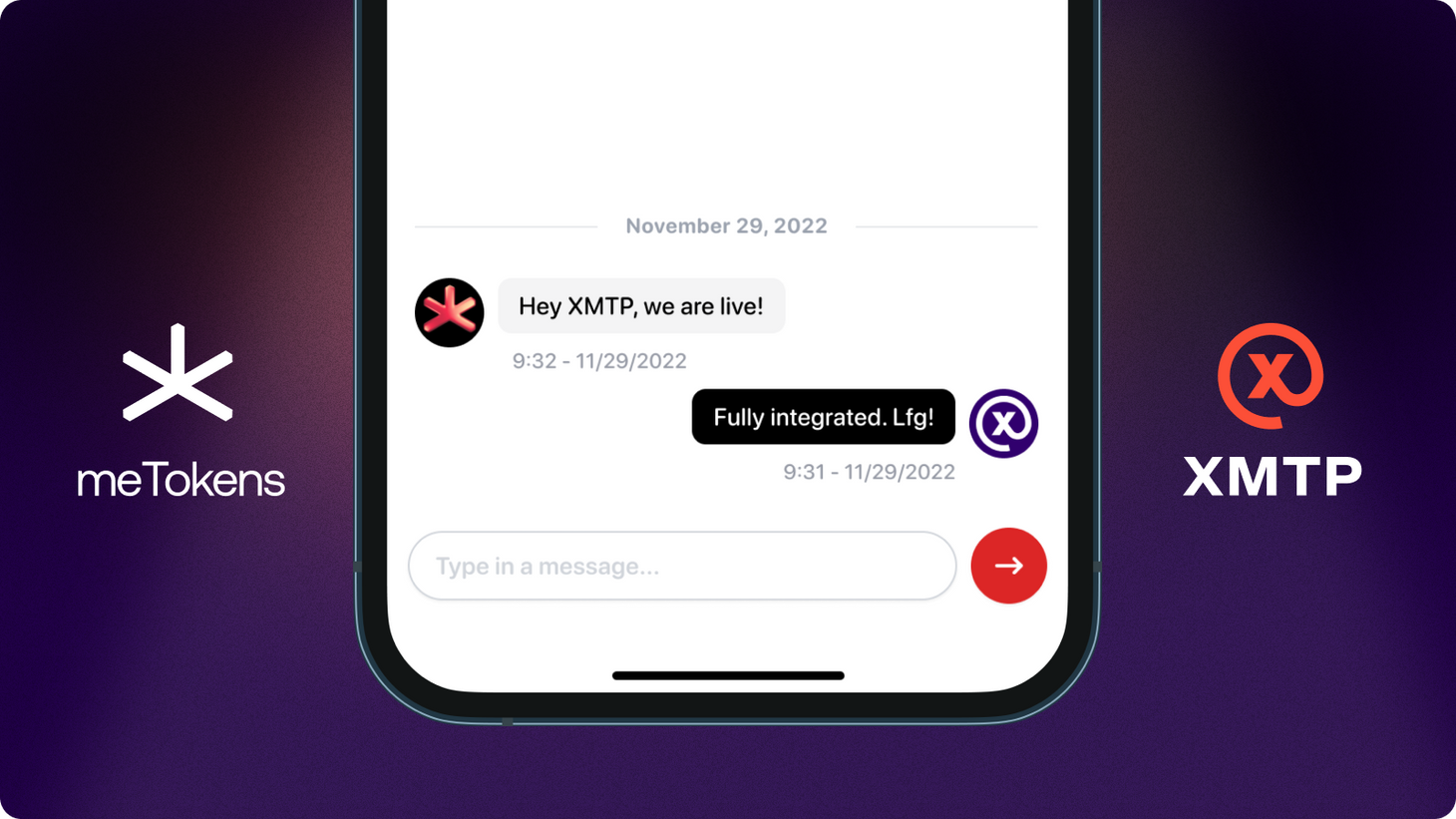
"Wow" is just about the best way we could sum up @ETHGlobal's #ETHSanFrancisco.
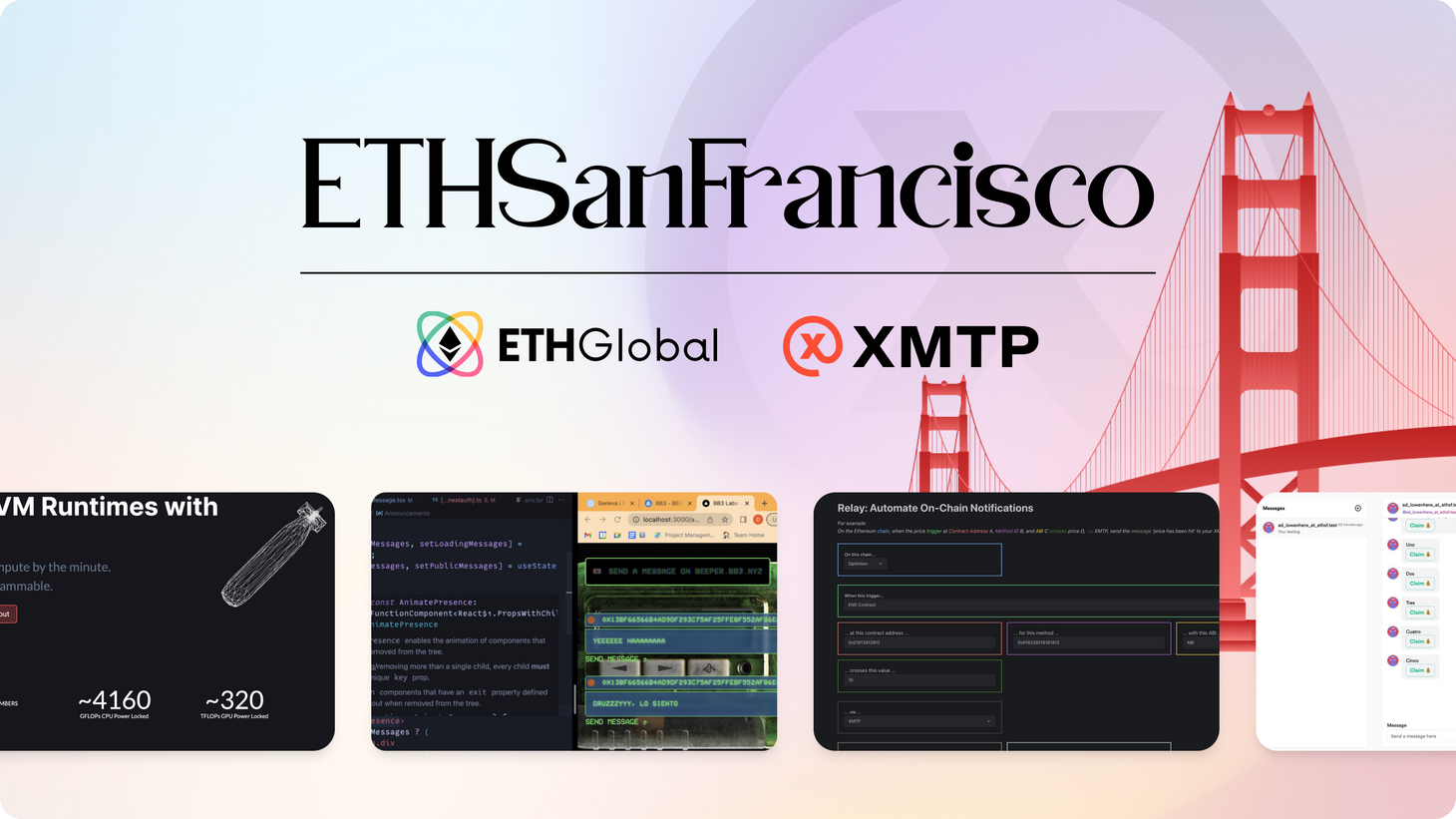
XMTP and Lens hosted a 𝕏 Spaces event on November 10 to dig into how developers can now use XMTP to add E2EE DMs into their Lens apps.
Today XMTP reaches a big milestone in our journey to build protocol for secure web3 messaging:
Lens Protocol has adopted XMTP to provide a secure and private direct messaging layer for the entire Lens ecosystem.

ETH Online hackers build incredible apps across video chat, game security, and talent platforms using XMTP.
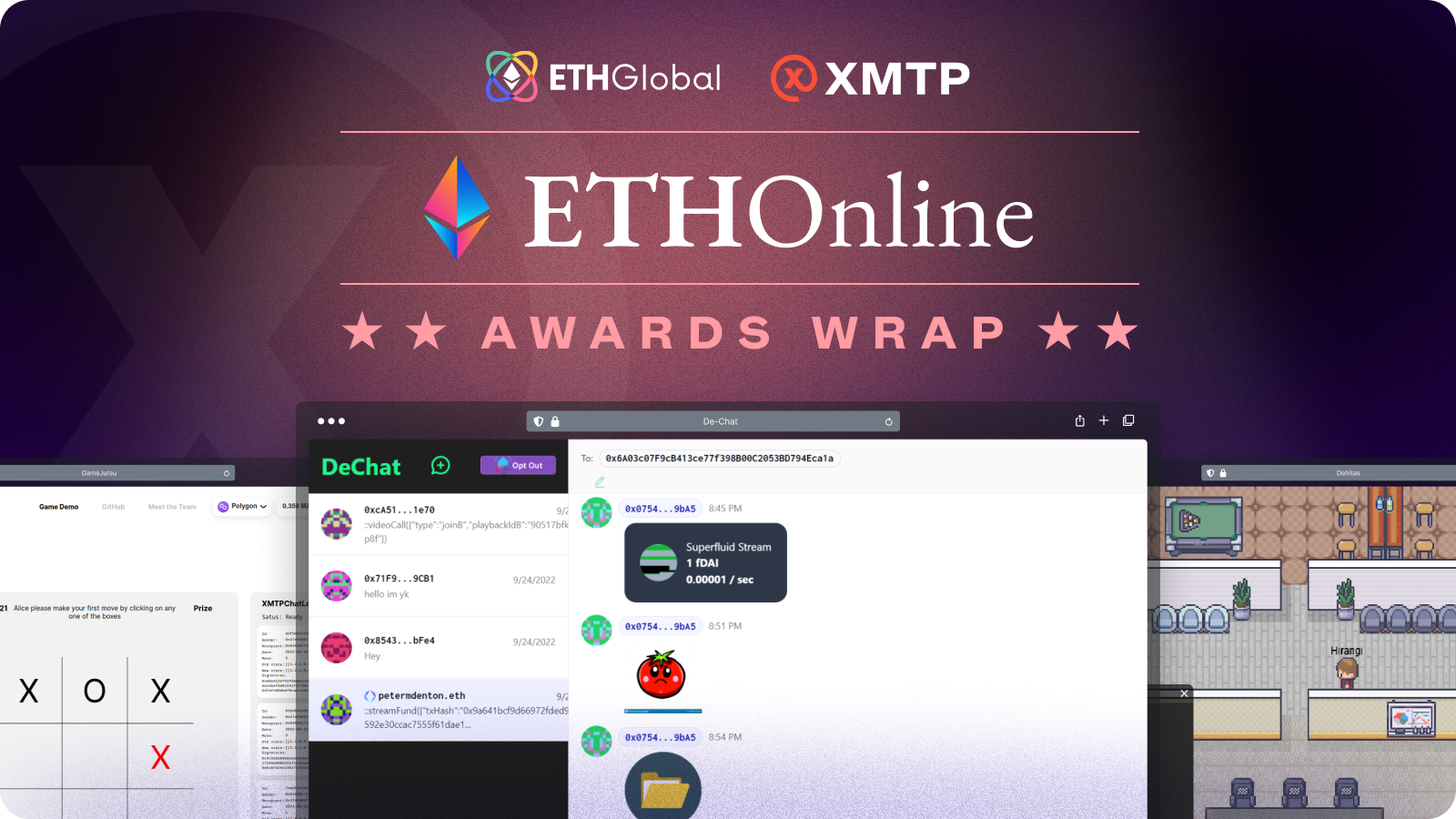
How XMTP enables wallets to secure conversations, not just transactions and assets.
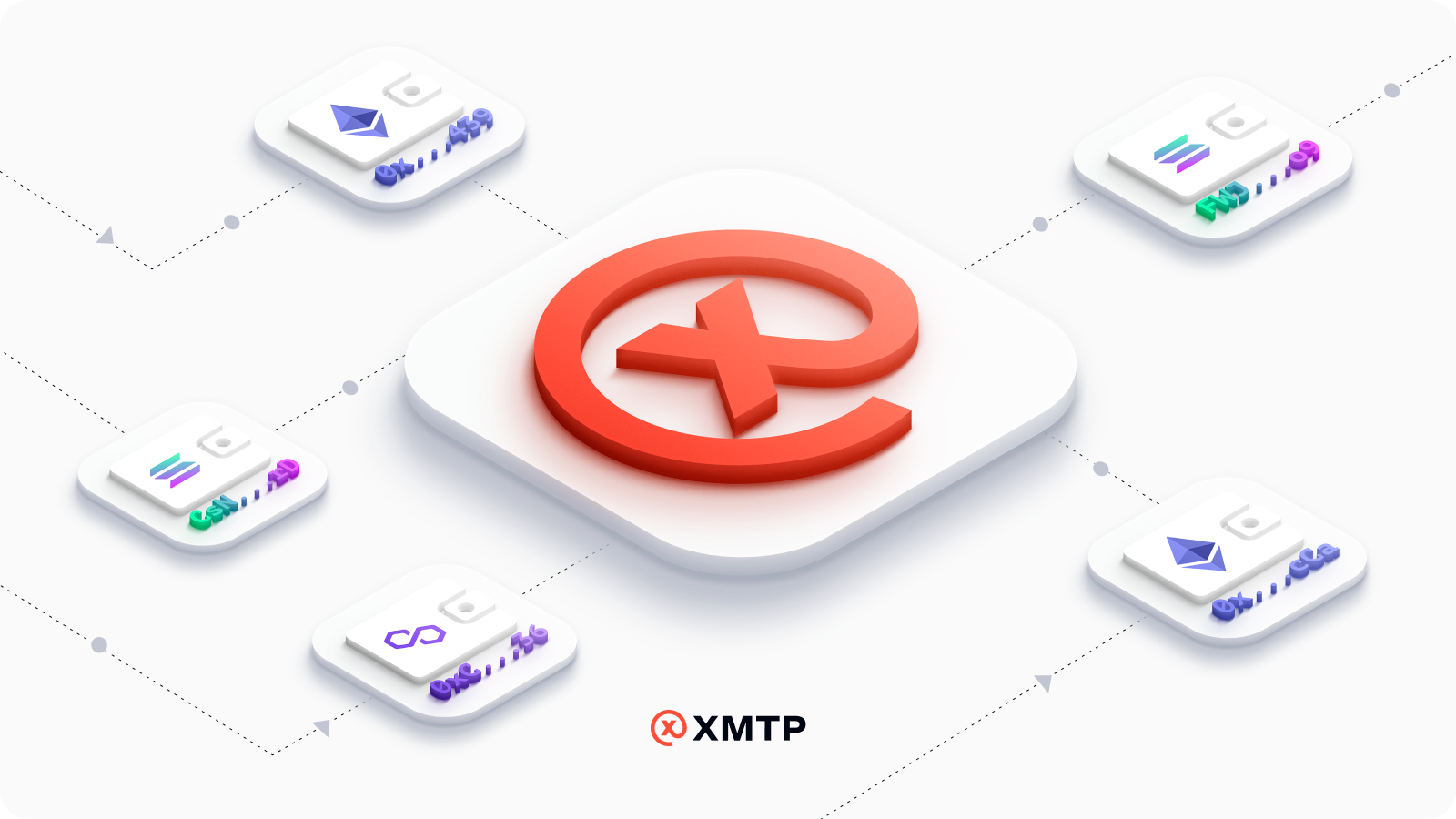
A primer on XMTP—the secure web3 messaging protocol—why we're building it, how it works, and where we see it going in the future.

Facilitating user communication and overcoming one of web3’s biggest challenges. NFT sales, POAP events, DAO activities, etc all have very meaningful reasons why users would want to message each other, but sometimes the website has no chat function and there’s no way to find the user elsewhere.


